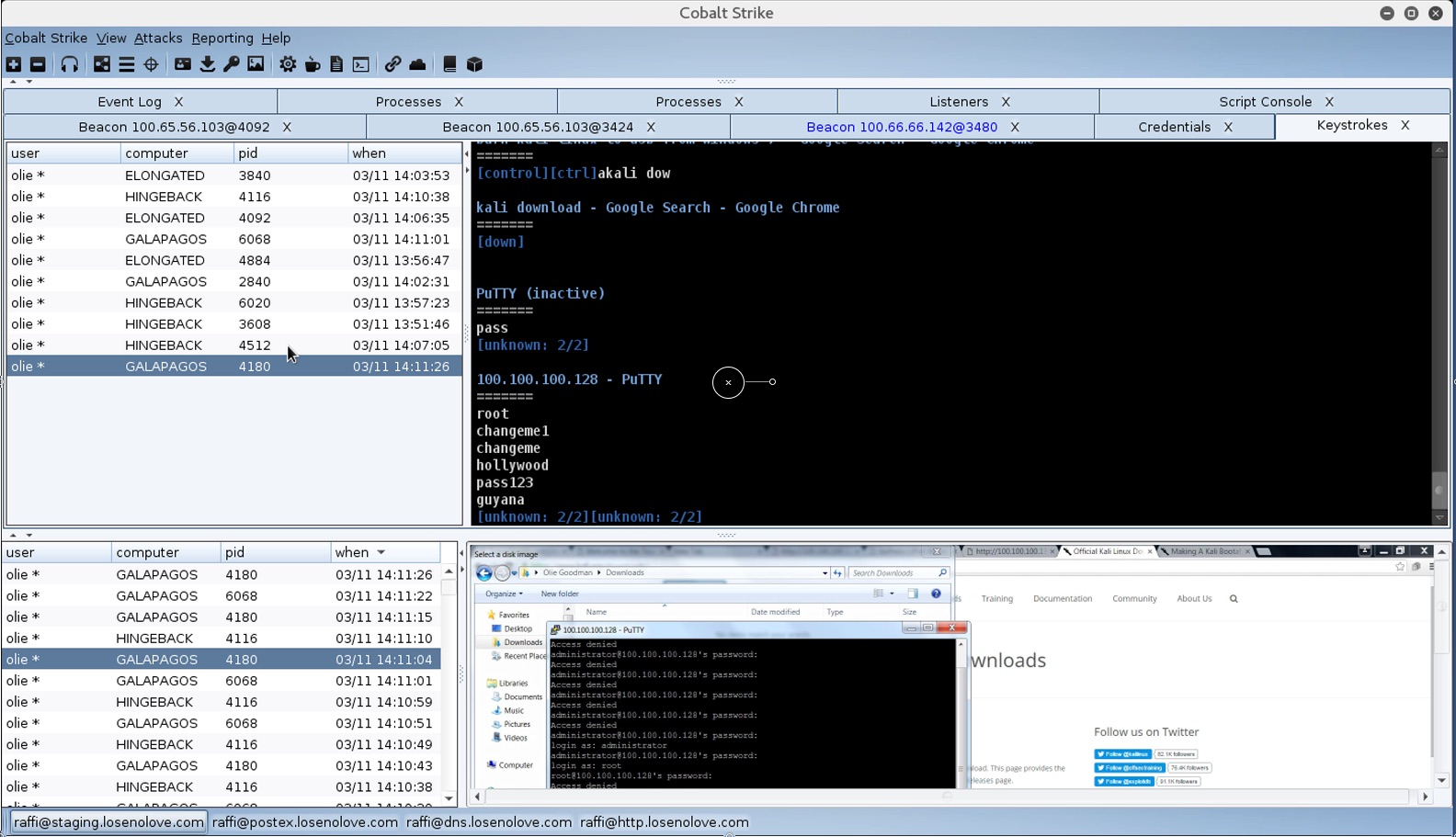Some hackers only think about access. It’s the precious. How to get that first shell? I don’t care too much about this. I’m concerned about the problems that come from having a lot of accesses. One of these problems has to do with user exploitation. If you have access to 50 or more systems at one time, how do you monitor what the users on those systems are up to?
At a certain point taking screenshots and logging keystrokes, one system at a time, isn’t very tractable. There is the analysis problem. How do you analyze and watch all of this information with few red team operators?
There is also the capability deployment problem. If you have 50+ accesses, it’s probably from lateral movement. If your payload is on a target in a SYSTEM context, you’re probably in no position to observe keystrokes or screenshots without migrating your payload or deploying your capability to the right process. Going through targets, one by one, to deploy a screenshot tool or keystroke logger is time consuming.
Cobalt Strike takes a stab at both of these problems. In this blog post, I’ll take you through Cobalt Strike’s post-3.0 model for user exploitation at scale.
The Data Browser
If one of your teammates takes a screenshot or starts a keystroke logger, the first question is: where do the results of these actions go? In Armitage, the answer is nowhere. Armitage’s model of collaboration isolates each operator from the post-exploitation actions other operators took. If a teammate takes a screenshot, there is no way for you to view that screenshot in Armitage. I see this as a shortcoming.
Cobalt Strike 3.0 does things much different from Armitage. Screenshots and Keystrokes in Cobalt Strike 3.0 are now dumped to one interface. I call it a data browser. Go to View -> Screenshots or View -> Keystrokes to access this information.
Through the data browser, any team member may watch screenshots and keystrokes as they show up. The data browser makes these post-exploitation features more collaboration friendly. It also aids analysis too. Depending on the workload, you may devote one team member to watching this information as it comes in and tipping off the rest of the team to systems/users they should pay attention to, right now.
Mass Deployment
I thought I was Mr. Clever when I implemented Cobalt Strike 3.0’s data browser. Then the deployment problem reared its ugly head. Post-exploitation features like screenshot tools and keystroke loggers are very dependent on the context of the process that they’re run in. On Windows, the desktop session you’re in matters a great deal. If the user’s processes are run in session 1 and your payload is hanging out in session 0, you’re not going to see any keystrokes. It’s very important to conduct post-exploitation from the user’s context.
Some penetration testing payloads offer a migrate capability. I hate payload migration. It’s a great way to lose your access. I prefer to inject my post-exploitation capability into a user’s process and have the capability report results back to my payload which continues to live in its SYSTEM-level context. This is Cobalt Strike’s approach to post exploitation.
Fortunately, Cobalt Strike 3.0 introduces a way to push post-exploitation features to the right process on many systems at once. This is done through the Process Browser.
Cobalt Strike’s Process Browser is designed to show processes for multiple sessions at one time. Simply highlight all of the accesses you want to deploy post-exploitation tools to. Right-click, go to Explore -> Show Processes. Cobalt Strike will ask each session to return a list of processes. As these sessions report back with information, the Process Browser will update.
Once all of your accesses have called home, simply sort by process name and scroll down to explorer.exe. You will now see all of the explorer.exe instances across all sessions that have called home.
Highlight the explorer.exe instances you want to inject Cobalt Strike’s post exploitation tools into. Press the Screenshot button to ask these sessions to deploy the screenshot tool to their respective explorer.exe processes. Press the Log Keystrokes button to deploy the keystroke logger to the highlighted explorer.exe processes.
That’s Cobalt Strike’s model for mass deployment of post-exploitation tools. With Cobalt Strike 3.0, you now have the tools to know what’s happening on each compromised system. Part 4 of Advanced Threat Tactics covers Post Exploitation with Cobalt Strike 3.x in more detail.


